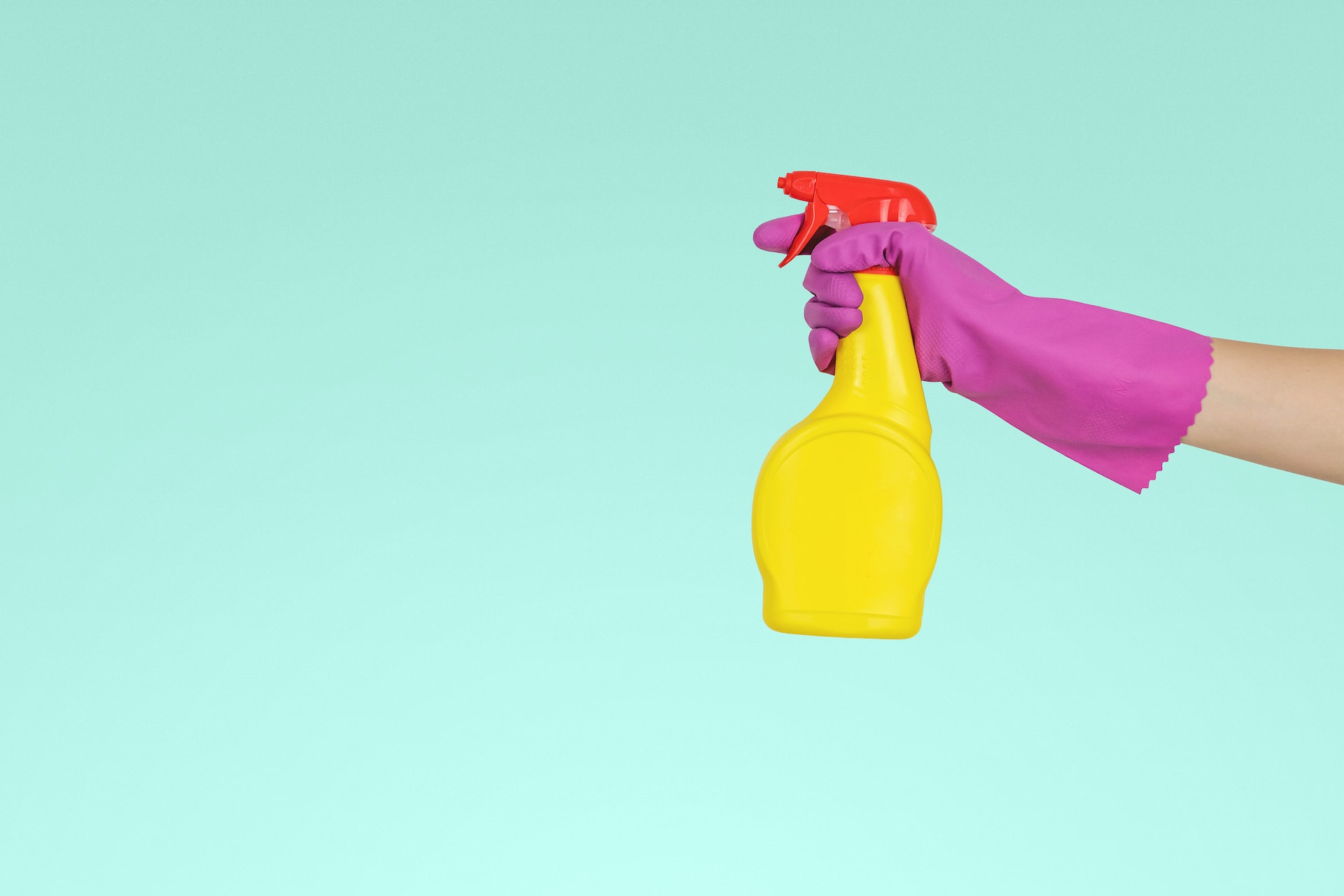Whether it’s your favorite wool coat or a pair of slacks, taking good care of your clothes will help them last longer. Quality clothing is an investment, so it’s essential to care for it properly to wear for a long time to come. This guide shows you how to care for a variety of different types of clothing. You’ll also learn a few laundry tips and tricks for ironing clothing correctly, washing machine cycles, hand washing tips, and how to care for delicate items. Drying, folding, and stain removal tips are also included, so you can practice good clothing care that will keep your favorite outfits fresh and in excellent condition well into the future.
Importance of making your clothes last longer
There are plenty of reasons why it’s essential to help your clothes last as long as possible, as well as many benefits too.
Sustainability: Used, old clothing often ends up in a landfill, which can cause harm to the environment. When your clothes last a long time, you’re keeping them out of the landfill and instead in your closet. Wearing your favorite items for a long time also reduces the need and desire to buy new clothing, which can be an easy way to practice sustainability.
Saving money: Not only is making your clothes last good for the environment, but it’s good for your wallet, too. Quality clothing isn’t cheap, and if it wears out too quickly, you’ll end up shelling out your hard-earned cash to buy more. Wear your clothes as long as possible to help you save money on new items needing replacement every month or every season.
Space-saving: The more clothes you buy, the more room they will take up in your closet. Keeping your clothing limited to a few key pieces will free up space for other things like shoes, linens, and handbags.
Types of clothing material
Clothing is made from a wide variety of different materials. Here are some examples of the most commonly used materials to make your favorite clothes:
Cotton: Made from the cotton plant, this is one of the most popular clothing materials of all time. Cotton is soft to the touch, easy to clean, and highly breathable. Wear cotton clothing in the summer to keep you cool or alternately to add a layer of insulation in the winter.
Wool: This extremely thick, warm material comes from the fleece of sheep, alpaca, goats, and other animals. It’s often used to make winter clothing like gloves, hats, and sweaters. Aide from your favorite sweater, wool is also used to make area rugs, piano dampers, and other items.
Silk: This is considered one of the most luxurious clothing materials available; silk originates from Ancient China and comes from the cocoon of the mulberry silkworm. This thin, ultra-smooth, and semi-shiny material can be dyed any color and often make blouses and scarves.
Leather: Nothing says edgy like an excellent leather jacket. This material typically comes from cowhide but can come from a wide range of other animal species too. The supple feel of leather is pleasing to touch and is often used to make everything from pants and jackets to shoes and handbags.
Synthetic: The term synthetic refers to any clothing that comes from a manufacturer or factory. Synthetic material can range from any stretch fabric, spandex and rayon to nylon and polyester.
Denim: Your favorite pair of jeans are likely made from denim. This durable fabric comes from cotton made utilizing a twill weave to create diagonal ribbing. This ribbing is what separates denim from other materials like canvas.
Satin: Similar to silk in terms of looks, satin is a smooth, lustrous fabric that comes in a rainbow of brilliant colors. This unique material is made of fibers like nylon and polyester and often has a shiny front and a flat, matte back.
Cashmere: This luxurious and soft wool that is produced from the fine undercoat of the Cashmere goat is one of the is softest materials; cashmere has ultra-fine insulating hairs. Wash it with special care to avoid unwanted issues; with proper maintenance and care, the color, texture, and quality of the cashmere will last for more than a decade.
Bamboo: Similar to the softness of silk, since the fibers are without chemical treatment, they are naturally smoother and rounder with no sharp spurs to irritate the skin, making bamboo fabric hypoallergenic and perfect for those who experience allergic reactions to other natural fibers such as wool or hemp. The best maintenance of bamboo clothing, it should be washed using the gentle cycle, cold or lukewarm water, where line dried is preferred.
Laundry tips 101
Here are some helpful laundry tips, so you can care for your favorite clothing the right way to help it last longer.
Laundry symbols: Also called clothing care symbols, these small pictures indicate the clothing maker’s suggestions for caring for the item correctly. These important symbols show you how to wash, dry, dry-clean, and iron all of your clothing per the unique recommendations. Understanding the meaning of these symbols makes it easier to ensure that you’re cleaning your clothes the correct way to extend their lifespan.
Reading labels and laundry symbols meaning: All clothing tags should include some laundry symbol or symbols to serve as a handy quick care guide. The washing symbol indicates whether the item should be machine or hand washed. It may also show whether the item should be dry cleaned or if dry cleaning should be avoided. Washing temperature symbols indicate whether the clothing should be washed between 65F and 85F, at temperatures of 105F max, or a hot cycle of 120F max.
Other symbols: Aside from the washing symbols on your clothing tags, there should also be symbols indicating the proper way to dry and iron the clothing. The symbols will indicate whether to dry the item and at what temperature. Another symbol indicating whether or not bleach should be used will be included, too. Finally, look for the ironing symbol that will show you if the article of clothing requires a clothes iron and, if so, at what temperature.
Detergent and fabric softener
Using detergent and fabric softener the right way can extend the life of your clothing, too. Here are some washing machine tips and some dos and don’ts when using your laundry detergent and fabric softener.
Do
- Fill the washing machine with water and detergent before you add your clothes. This will help the detergent and fabric softener dissolve properly.
- Use detergents without added fragrance or colors if you have sensitive skin.
- Choose wool dryer balls to soften your clothes without fragrance or a liquid fabric softener or dryer sheets for a subtle scent if you prefer.
- Make sure you use the appropriate type of detergent for the clothing you wash. Some detergents are too harsh for delicates, like lingerie and undergarments.
- Avoid using too much detergent to prevent leaving residue on your clothes.
Don’t
- Use bleach on certain fabrics, particularly dark colors, unless you dilute it first.
- Add too much detergent or fabric softener as it may weaken fibers or leave a film on your clothes.
- Put liquid softener directly on top of your clothes, or it may damage them.
- Leave your wet clothing in the washer for too long. Doing so may cause mold and mildew to build on your clothes and inside the machine.
Tips and tricks for ironing, line drying, and folding/hanging
Clothing care also involves making sure that you iron, dry, and fold or hang them the right way. Here are some tips and tricks to help you do it right.
How to iron a shirt.
- Follow the directions per the laundry care tag symbol to ensure you’re using the iron in the appropriate heat setting.
- Use an ironing board and slowly move the iron across the shirt’s fabric in the same direction.
- Start with the collar, then move on to iron the cuffs, yoke, back, front, and sleeves in that order for a perfectly ironed shirt.
How to iron a dress: If your dress has a belt, remove it and iron this first. Next, using the right setting and an ironing board, start with the collar and move onto the yoke, sleeves, and finally the body of the dress.
Line dry tips:
- Always clean your clothesline with a wet rag before hanging items to dry.
- Shake your clothing before you hang it to help remove any wrinkles.
- Hang shirts by the hem and jeans and pants by the waistband.
- Always use quality clothespins that will keep each item securely in place until it is scorched.
- Remove your clothing from the clothesline as soon as it’s dry to keep it clean and prevent it from falling onto the ground.
How to fold a shirt/t-shirt: Lay your shirt on a flat surface before folding it. Smooth any wrinkles with your hand, pull the shirt taut, and then fold it sideways into thirds, bringing the sleeves in. Next, fold the shirt in half from the bottom up. Repeat this step, so the shirt is now half its size, then place it in your dresser drawer or on a closet shelf to store it.
Use the right hangers: Using the best clothes hangers will help your clothing last longer. For heavy items like coats and denim, wooden hangers are best. Velvet hangers look excellent, take up less space, and work well for delicate items made of silk or linen. Look for hangers with hooks or notches to help you hang items with thin straps. A hanger with a bar is a good option for pants and jeans.
Keep these clothing care tips in mind, so you can ensure that your favorite articles of clothing last longer. With the proper laundry care, drying methods, ironing techniques, and storage, you’ll be able to save money on clothing, all while helping the environment, too. Practicing the correct type of laundry care for different materials ensures that your favorite dresses, jeans, tops, and other clothing will provide you with various outfits for years to come.




